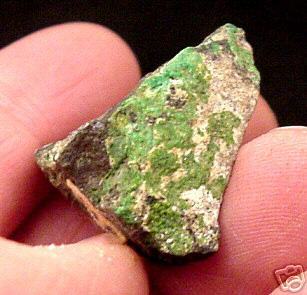Home PageAbout MindatThe Mindat ManualHistory of MindatCopyright StatusWho We AreContact UsAdvertise on Mindat
Donate to MindatCorporate SponsorshipSponsor a PageSponsored PagesMindat AdvertisersAdvertise on Mindat
Learning CenterWhat is a mineral?The most common minerals on earthInformation for EducatorsMindat ArticlesThe ElementsThe Rock H. Currier Digital LibraryGeologic Time
Minerals by PropertiesMinerals by ChemistryAdvanced Locality SearchRandom MineralRandom LocalitySearch by minIDLocalities Near MeSearch ArticlesSearch GlossaryMore Search Options
The Mindat ManualAdd a New PhotoRate PhotosLocality Edit ReportCoordinate Completion ReportAdd Glossary Item
Mining CompaniesStatisticsUsersMineral MuseumsClubs & OrganizationsMineral Shows & EventsThe Mindat DirectoryDevice SettingsThe Mineral Quiz
Photo SearchPhoto GalleriesSearch by ColorNew Photos TodayNew Photos YesterdayMembers' Photo GalleriesPast Photo of the Day GalleryPhotography
╳Discussions
💬 Home🔎 Search📅 LatestGroups
EducationOpen discussion area.Fakes & FraudsOpen discussion area.Field CollectingOpen discussion area.FossilsOpen discussion area.Gems and GemologyOpen discussion area.GeneralOpen discussion area.How to ContributeOpen discussion area.Identity HelpOpen discussion area.Improving Mindat.orgOpen discussion area.LocalitiesOpen discussion area.Lost and Stolen SpecimensOpen discussion area.MarketplaceOpen discussion area.MeteoritesOpen discussion area.Mindat ProductsOpen discussion area.Mineral ExchangesOpen discussion area.Mineral PhotographyOpen discussion area.Mineral ShowsOpen discussion area.Mineralogical ClassificationOpen discussion area.Mineralogy CourseOpen discussion area.MineralsOpen discussion area.Minerals and MuseumsOpen discussion area.PhotosOpen discussion area.Techniques for CollectorsOpen discussion area.The Rock H. Currier Digital LibraryOpen discussion area.UV MineralsOpen discussion area.Recent Images in Discussions
Identity HelpChromite and green unknown?
22nd Nov 2014 22:59 UTCKyle Beucke 🌟
On a recent collecting trip, a friend found a chunk of what we believe to be chromite (first photograph). It is black in color, shiny, very hard to scratch with a steel knife (estimated hardness of >4), when it is scratched into powder, the powder (streak) is brown in color, and the specimen is slightly magnetic. It looks like there are small serpentinite slickensides and possible chrysotile (or altered from such) veins in the chromite.
There is an apple-green mineral that appears to form veins in the chromite (second photograph). It is somewhat hard (maybe 4 or higher). Where exposed, it looks like rounded and smooth blobs and crusts (third photograph).
The area this was found is mostly serpentinite and small chromite mines were operated there in the past. Much of the chromite was mined as float.
Does it sound like this is pretty obviously chromite? Any ideas for what the green mineral could be?
Thanks!
Kyle

22nd Nov 2014 23:36 UTCKeith A. Peregrine
22nd Nov 2014 23:59 UTCMark Heintzelman 🌟 Expert
Serpentine can be very complex and specific species cannot really be determined without diagnostic work in the lab.
MRH
Genthite on Chromite (West Nottingham twp.,Chester Co., PA) old 19th C. collection 3.5 x 3.2 x 2.2cm
23rd Nov 2014 06:25 UTCKyle Beucke 🌟
Keith: This was collected in the Clear Creek Management Area, San Benito County, California.
Mark: The >4 hardness was an estimate; all I can say is it is more difficult to scratch than, say, chalcopyrite, but still possible with a knife. That is interesting that this might be a serpentine mineral! If so, would this have formed during the serpentinization of the peridotite that contained the chromite?
Kyle
23rd Nov 2014 22:32 UTCMark Heintzelman 🌟 Expert
I've done some reading on the northern california serpentine belt, but little to nothing on what you have down south. Here is an excellent report on the region I'm more familiar with, if you want to riffle through it for some expansion on details of the process, but you may be better off looking for a publication more specific to your area. It is a complex process with many variables from deposit to deposit, but I must admit I've always been fascinated by serpentine zones in general!
http://pubs.usgs.gov/bul/1546a-d/report.pdf
MRH




Mindat.org is an outreach project of the Hudson Institute of Mineralogy, a 501(c)(3) not-for-profit organization.
Copyright © mindat.org and the Hudson Institute of Mineralogy 1993-2024, except where stated. Most political location boundaries are © OpenStreetMap contributors. Mindat.org relies on the contributions of thousands of members and supporters. Founded in 2000 by Jolyon Ralph.
Privacy Policy - Terms & Conditions - Contact Us / DMCA issues - Report a bug/vulnerability Current server date and time: April 25, 2024 02:07:14
Copyright © mindat.org and the Hudson Institute of Mineralogy 1993-2024, except where stated. Most political location boundaries are © OpenStreetMap contributors. Mindat.org relies on the contributions of thousands of members and supporters. Founded in 2000 by Jolyon Ralph.
Privacy Policy - Terms & Conditions - Contact Us / DMCA issues - Report a bug/vulnerability Current server date and time: April 25, 2024 02:07:14














